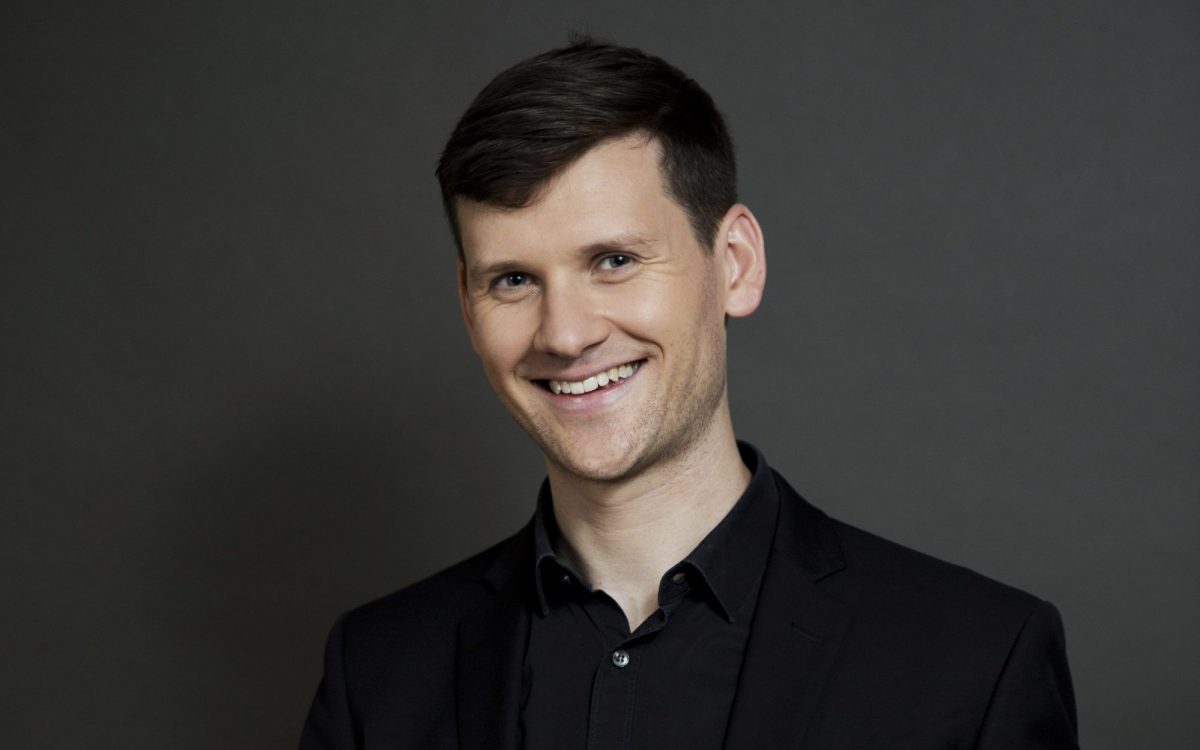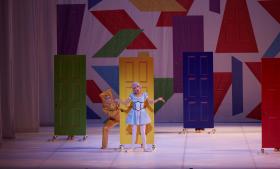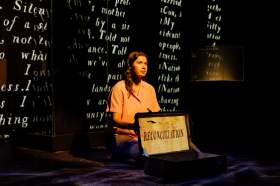Jonathon Ramsay is best described as an emerging virtuosic trombonist in the same vein as Christian Lindberg (who’s the James Galway of the trombone world). For this standout performance, he was the guest soloist for Australian composer Joe Chindamo’s almost two-year-old concerto for trombone and orchestra, Ligeia, which takes its name from Edgar Allan Poe’s poem. Along with pieces by famed US composers Samuel Barber, Leonard Bernstein and George Gershwin, Melbourne Symphony Orchestra (MSO)’s American Stories was an impressive mix of technical proficiency and toe-tapping fun.
The first half of the concert featured a lesser known work by Barber along with Chindamo’s concerto, while the second half presented the more familiar works, ‘Symphonic Dances’ from West Side Story by Bernstein and Gershwin’s An American in Paris.
The concert opened with Barber’s first orchestral composition, Overture to The School for Scandal Opus 5, which he wrote at the age of 21, while still at the Curtis Institute of Music in Philadelphia (the “partner” premier music school in the US alongside New York’s Juilliard). The inspiration for the work is the 1777 comedic play of the same name by Richard B Sheridan and is a short eight-minute piece that premiered 90 years ago.
As the piece is written to emulate the sense of fun and drama experienced in a schoolyard, it doesn’t follow any particular structure. To a modern audience, the opening bars have a Star Wars-esque feel, before the strings take over in a very quiet manner to build to a crescendo that’s finished by the high wind. This sets the tone for the rise and fall that continues throughout the piece, where dramatic peaks feature an unaccompanied solo instrument that is shared around the orchestra.
The interplay between the strings and woodwind, brass and percussion throughout the performance was masterfully handled by the MSO musicians under conductor Benjamin Northey. There is a small dramatic turn near the end where you can hear a hint of the piece Barber would go on to compose a few years later, and that would become his most famous work, commonly known as Adagio for Strings.
In 2022, the Adelaide Symphony Orchestra (ASO) commissioned Chindamo to compose a piece that would feature the Orchestra’s principal trombonist, Colin Prichard. Chindamo observed in an interview that the challenge was getting to know Prichard’s amazing abilities rather than just the “standard” techniques of the instrument itself. He said, ‘As a solo instrument, [the trombone] has a huge range of capabilities, from comedic gestures to being heartbreakingly mournful, and it was a delight to explore its kaleidoscopic array of faces.’
By channelling Poe’s gothic poem Ligeia, alongside psychologist Carl Jung’s idea of the mask we wear, Chindamo has added a significant piece to the relatively small pool of 100 concertos for trombone and orchestra (compared with those written for violin, for example) and, following its ASO premiere in 2022 and subsequent European premiere before its Melbourne debut here, it’s set to become a cornerstone piece of the repertoire.
The first movement, ‘Animato’, is fast and furious and Northey had his work cut out to keep the Orchestra from getting away from him. However, they did sit beautifully underneath Ramsay’s clear and warm sound, enabling him to showcase a range of tonguing techniques, from flutter to triple and beyond, with the occasional glissando. Ramsay’s control was so magnificent that he was able to add just the slightest touch of brassiness (where the sound is a little crunchier) around a note or phrase with such ease that you’d think anyone could do it.
For the slower second movement, ‘♩ = 60’, Ramsay was able to really draw out the lyrical voice of the trombone, while the strings, led by Acting Associate Concertmaster Tair Khisambeev, provided a very gentle pizzicato accompaniment. As the leadership trio of Northey, Khisambeev and Ramsay settled into their rhythm, the hand-offs between the Orchestra’s sections were deftly treated and they transitioned into the up tempo third movement, ‘Dramatically’, without stopping.
There were calls and answers between Ramsay and different parts of the brass section, with the strings taking the adventurous charge at various points. It finished to rapturous applause from the audience and Chindamo taking to the stage for two bows.
After the interval, Northey and the Orchestra settled in to enjoy performing Bernstein’s ‘Symphonic Dances’ from West Side Story. You didn’t need to have seen the musical or the movie to appreciate how this interpretation of familiar themes brought a chuckle from the audience, from the Orchestra’s clicking during the opening Prelude to them calling out ‘Mambo!’ during the eponymous fourth song.
The musicians may have been in bow ties and tails, but this piece helps orchestras feel much more approachable and accessible, something for which Bernstein was known (think of his Young People’s Concerts television programs from 1958 to 1972).
The program finished with Gershwin’s An American in Paris, which premièred in 1928 and would be the inspiration for the 1951 movie of the same name. As a continuous movement, or symphonic poem, it evokes the story of an American tourist walking down the Champs-Élysées in mid-summer, amused by taxicabs and cafés, but then struck with homesickness, until they meet up with fellow American tourists and decide to enjoy Paris until it’s time to return home.
The Parisian taxi-horns are a feature of the opening and were specifically included by Gershwin. You can hear the jazz influence via the saxophones – a rarity in the orchestral hall – and brass section, from the tuba to the trombones to the trumpets. The strings also get to have their conversation with the oboe and woodwinds to evoke the emotion of experiencing a vibrant European city.
To quote an overheard remark in the foyer immediately after the concert: ‘Well, that was a lot of fun.’
Read: Comedy review: Laura Davis: Albatross, DoubleTree By Hilton, MICF 2024
With thanks to Mary Turner for her specialist trombone insights.
American Stories: Bernstein, Gershwin and more
Conductor: Benjamin Northey
Solo Trombone: Jonathon Ramsay
Melbourne Symphony Orchestra
American Stories: Bernstein, Gershwin and more was played at Hamer Hall, Arts Centre Melbourne on 11 and 13 April and at Costa Hall, Geelong Arts Centre on 12 April, with selections from the program performed at ‘Quick Fix at Six’ at Hamer Hall, Arts Centre Melbourne on 15 April 2024.





